By Sherri of Sew Betty and Dot
We may not often give too much thought to collars, but the collar in its many forms is an important design element on a garment: when one says "Peter Pan," "sailor," or "Mandarin," we all instantly know what those specific collars look like. And the word "collar" features in several English-language idioms: "blue collar worker"; "hot under the collar"; and in law enforcement terminology, a suspect is "collared" (perhaps derived from the fact that policemen grabbed suspects by the belt and collar).
The history of collars is a bit murky, but it appears that they developed out of the drawstring edge of a chemise, the undergarment that men and women wore for centuries under their outer garments. That ruffled edge developed into ruffs--think Queen Elizabeth I--and then into other forms and shapes.
Until the early twentieth century, men's shirts had detachable collars (and cuffs)--because the body of the shirt was usually hidden under a waistcoat or jacket when the man was out in public, the fact that it hadn't been washed for several weeks wasn't readily apparent; filthy collars and cuffs, however, would be instantly noticed, so clean ones could be substituted much more frequently than the shirt itself was laundered.
Let's take a look at some collars--by no means an exhaustive examination--and observe how they change the look and feel of a garment.
Clockwise from top left:
1. Stand-up collar with horseshoe neckline: Simplicity 8307
2. Sailor collar: Butterick 3532
3. Wide notched collar: McCall's 5251
4. Jabot collar: Butterick 4658: DejaVu Patterns
Clockwise from top left:
1. Petal collar: Simplicity 8485
2. Nehru (technically a Mandarin collared jacket, but wanted to show the guys some love!): McCall's 9484
3. Cape collar: Advance 8234
4. Ruffled collar on bateau neckline: Vogue 1355
Clockwise from top left:
1. Peter Pan collar: McCall's 4162
2. Roll collar: Advance 3111
3. Ruffled collar on V-neck: Simplicity 5896
4. Flat collar with ruffle: Simplicity 4913
Clockwise from top left:
1. Mandarin collar: Simplicity 6537
2. Sailor collar: Marian Martin 9442
3. Bow collar (and Mandarin!): Simplicity 3438
4. Scalloped shawl collar: Butterick 4558
Clockwise from top left:
1. Dog ear collar: Simplicity 9691
2. Cowl collar: Vogue 5558
3. Wing collar: Butterick 5216
4. Chelsea collar: Simplicity 3615
Picture yourself in one of these collar styles--which one do you prefer? Tell us in the comments If your favorite style is not pictured here, tell us about it.
Showing posts with label design elements. Show all posts
Showing posts with label design elements. Show all posts
Thursday, July 25, 2013
Thursday, June 27, 2013
Focus on: Pockets
By Sherri of Sew Betty and Dot
This is the first in a series of blog posts focusing on a particular aspect of a garment's design.
Today we look at pockets, those oh-so-handy (pun intended) applied elements that began as a practical solution to carrying around necessities and then began to take on a design or decorative purpose over the ages. The pockets below are clearly just decorative! (Or maybe a small lipstick and one house key will fit?)
The word "pocket" is derived from the Anglo-Norman word "pokete," which means small bag or pouch. And the first pockets were indeed small bags sewn onto a thin band that was then tied around a woman's waist, usually over her shift and under her petticoats (men's pockets were sewn right into seams and linings)--women's dresses did not have pockets as we know them, sewn into/onto a garment, until the eighteenth century. Remember, dresses were full and wide-shirted, with petticoats and/or panniers and hoops under them. A pocket could be worn with no interruption to the line of the dress itself.
And these tied-on pockets seemed to have held quite a lot: handkerchiefs, needle kits, combs, pocket-books (small diaries), snuff cases, scent bottles (often held up to the nose to block out some of the unpleasant odors associated with urban living), and sometimes even small food items (!). Pockets were often hand made and frequently made by friends as gifts.
When fashions changed to the more straight up-and-down form familiar from the Regency period (Jane Austen, anyone?), the tied-on pockets, which added bulk, no longer worked: voila, the reticule (a very small, often drawstring bag) was born.
By the 1840s, as fashion changed again and dresses and skirts became full again, they began to have pockets sewn into the seams. (All of the pocket history comes from the Victoria and Albert Museum, which, in addition to being one of my very favorite museums, is a fabulous fashion/costume resource online.) But enough history: let's look at some gorgeous vintage sewing patterns where the pocket is prominent.
Butterick 3918:
Dresses from the 1920s--again, with straight up-and-down lines, for the most part--didn't lend themselves to pockets. The dress above (late twenties/early thirties) has small diagonal patch pockets, not terribly noticeable. In the 1930s:
Patch pockets, often relatively small...
And an evening dress with tiny decorative pockets!
Pockets became more decorative in the 1940s; you often see contrasting colors or bias pockets, or designs where the pocket is a feature of the garment.
Enormous pockets!!! And then the 1950s:
And some Swingin' Sixties pockets:
Finally, 1970s pattern pandemonium:
Pockets! Pockets!! Pockets!!! It's a Pocket-Palooza!
Tell us in the comments: which pocket-centric pattern would YOU be most likely to wear?
This is the first in a series of blog posts focusing on a particular aspect of a garment's design.
Today we look at pockets, those oh-so-handy (pun intended) applied elements that began as a practical solution to carrying around necessities and then began to take on a design or decorative purpose over the ages. The pockets below are clearly just decorative! (Or maybe a small lipstick and one house key will fit?)
 |
| Butterick 7445: Sew Betty and Dot |
The word "pocket" is derived from the Anglo-Norman word "pokete," which means small bag or pouch. And the first pockets were indeed small bags sewn onto a thin band that was then tied around a woman's waist, usually over her shift and under her petticoats (men's pockets were sewn right into seams and linings)--women's dresses did not have pockets as we know them, sewn into/onto a garment, until the eighteenth century. Remember, dresses were full and wide-shirted, with petticoats and/or panniers and hoops under them. A pocket could be worn with no interruption to the line of the dress itself.
And these tied-on pockets seemed to have held quite a lot: handkerchiefs, needle kits, combs, pocket-books (small diaries), snuff cases, scent bottles (often held up to the nose to block out some of the unpleasant odors associated with urban living), and sometimes even small food items (!). Pockets were often hand made and frequently made by friends as gifts.
| Image courtesy The Duchess of Devonshire's Gossip Guide to the Eighteenth Century, who I believe got the image from Victoria and Albert online (see below). |
When fashions changed to the more straight up-and-down form familiar from the Regency period (Jane Austen, anyone?), the tied-on pockets, which added bulk, no longer worked: voila, the reticule (a very small, often drawstring bag) was born.
| Image courtesy JaneAusten.co.uk |
By the 1840s, as fashion changed again and dresses and skirts became full again, they began to have pockets sewn into the seams. (All of the pocket history comes from the Victoria and Albert Museum, which, in addition to being one of my very favorite museums, is a fabulous fashion/costume resource online.) But enough history: let's look at some gorgeous vintage sewing patterns where the pocket is prominent.
Butterick 3918:
Dresses from the 1920s--again, with straight up-and-down lines, for the most part--didn't lend themselves to pockets. The dress above (late twenties/early thirties) has small diagonal patch pockets, not terribly noticeable. In the 1930s:
 |
| Butterick 3918: |
 |
| New York 971: GreyDogVintage |
Patch pockets, often relatively small...
 |
| Simplicity 1562: MissBettysAttic |
 |
| DuBarry 1184B: All the Precious Things |
 |
| McCall 9451: PaneenJerez |
And an evening dress with tiny decorative pockets!
Pockets became more decorative in the 1940s; you often see contrasting colors or bias pockets, or designs where the pocket is a feature of the garment.
 |
| Simplicity 2075: PeoplePackages |
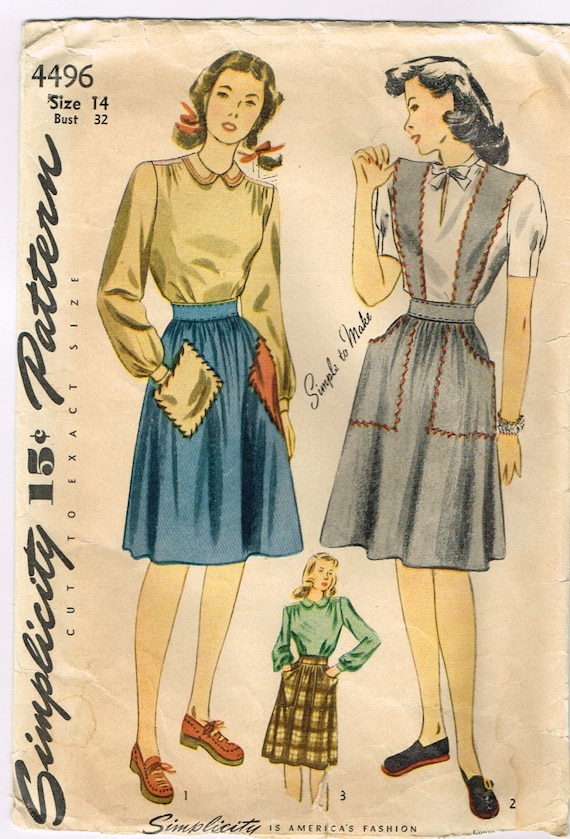 |
| Simplicity 4496: FaithfulFabrics |
 |
| Simplicity 2903: DesignRewindFashions |
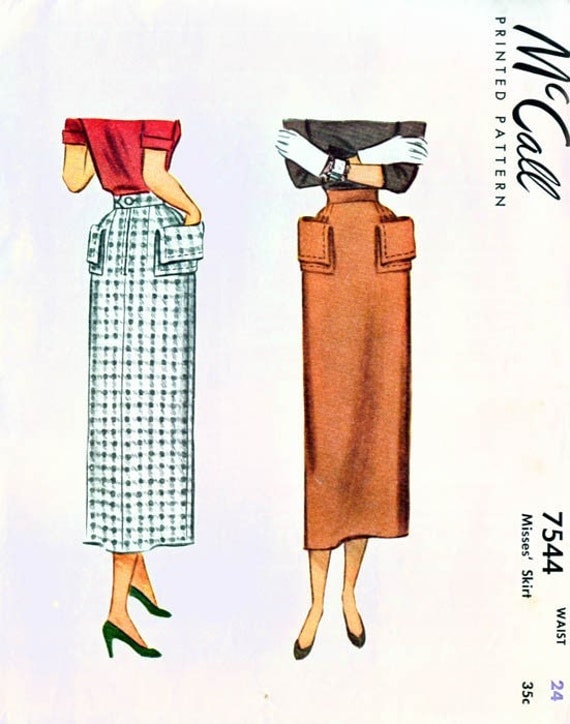 |
| McCall 7544: Sandritocat |
 |
| McCall's 7735: Anne 8865 |
Enormous pockets!!! And then the 1950s:
 |
| Simplicity 4354: RetroMonkeys |
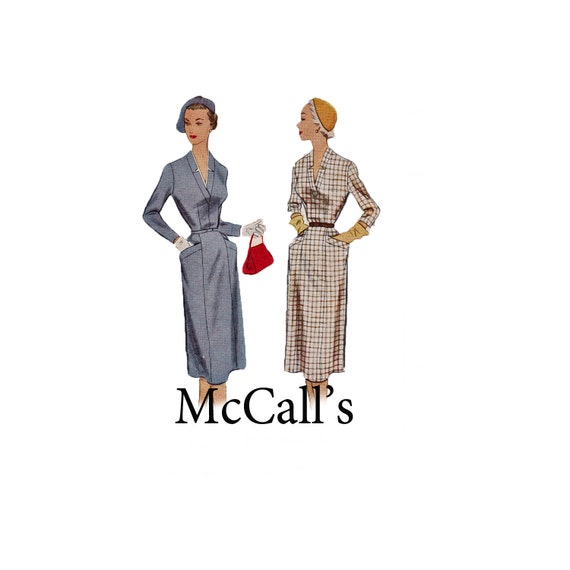 |
| McCall's 8731: Vienna's Grace |
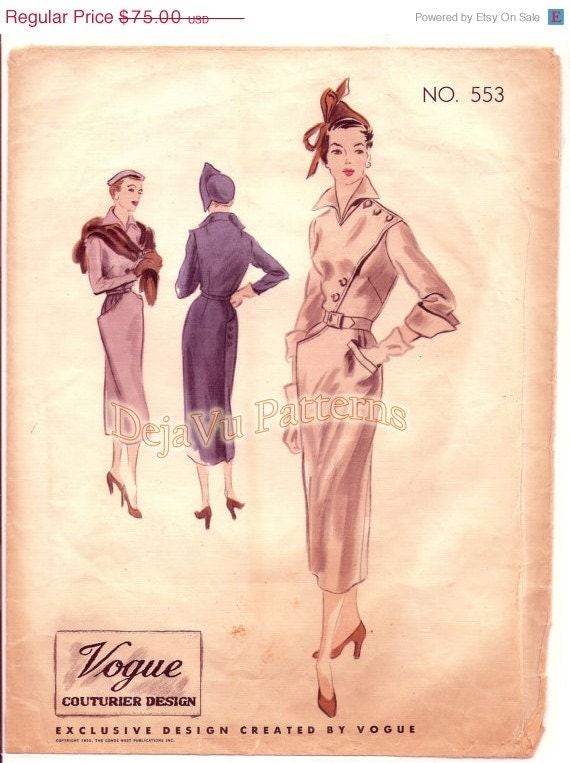 |
| Vogue 553: DejaVuPatterns |
 |
| Butterick 6125: RomasMaison |
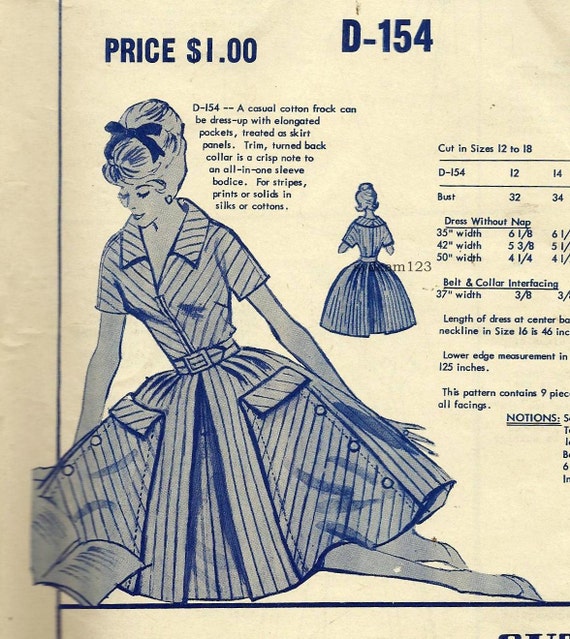 |
| Modes Royale D-154: SydCam |
 |
| Simplicity 4680: Cherry Corners |
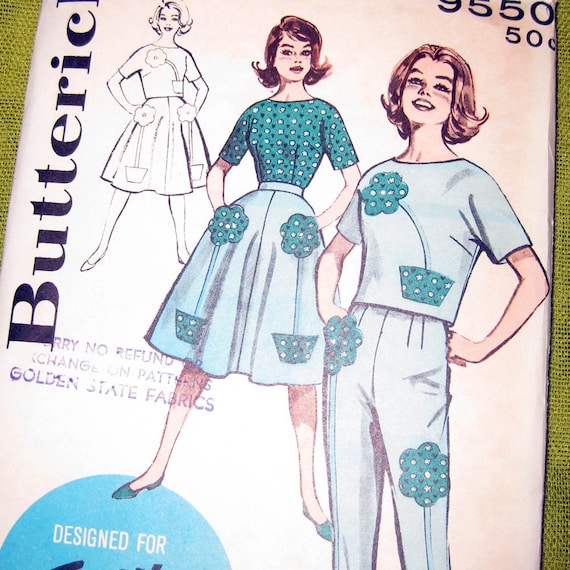 |
| Butterick 9550: SelvedgeShop |
 |
| Butterick 2288: RedCurlz |
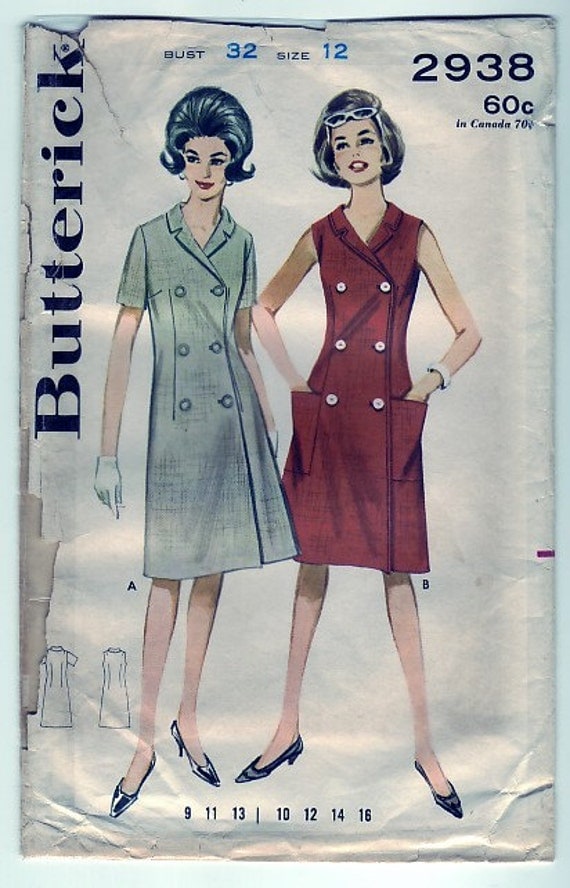 |
| Butterick 2938: SewUniqueClassique |
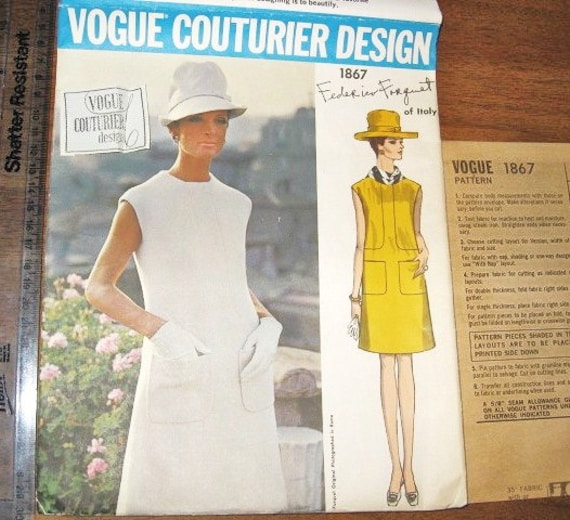 |
| Vogue 1867: SewBohemian |
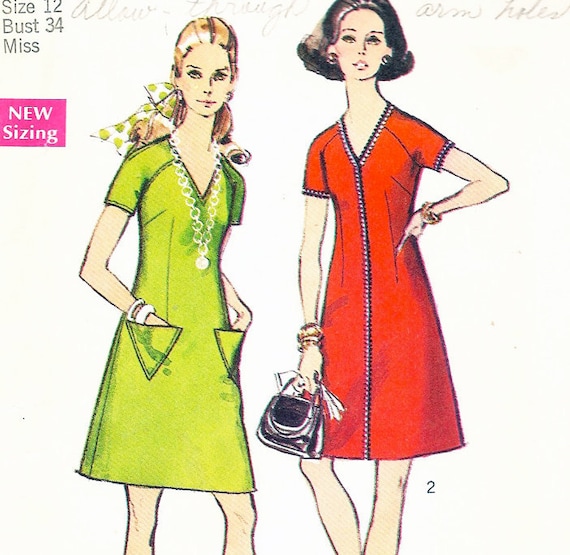 |
| Simplicity 8778: Sewing With Miss Dandy |
 |
| Butterick 6548: GrandmaMadeWithLove |
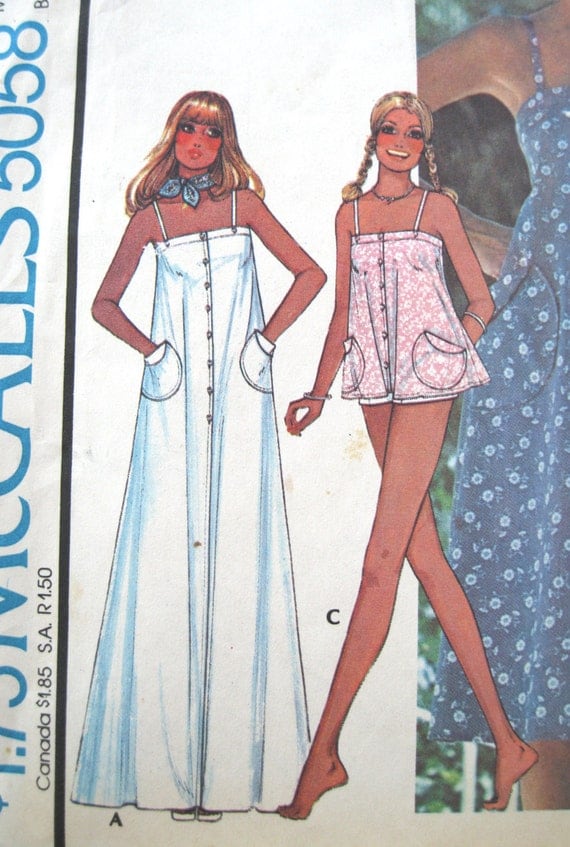 |
| McCall's 5058: QuiltCitySue |
 |
| Simplicity 7311: MBChills |
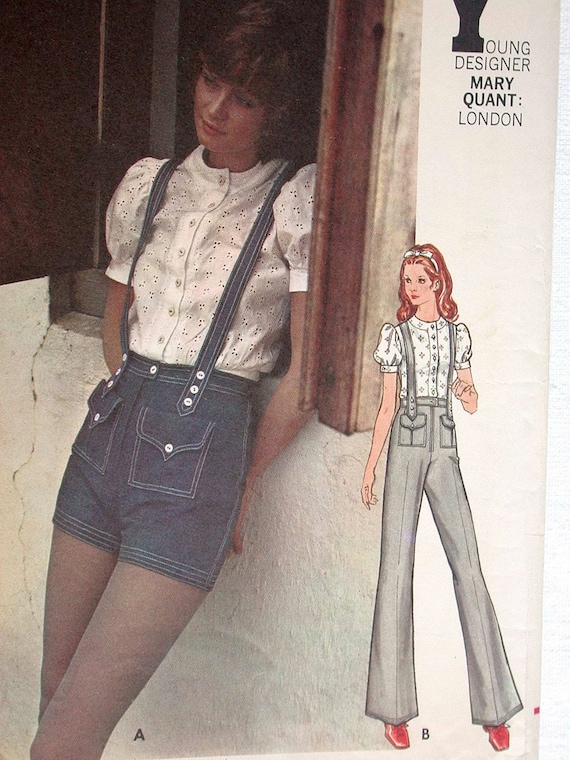 |
| Butterick 6243: CaliforniaSunset |
Pockets! Pockets!! Pockets!!! It's a Pocket-Palooza!
Tell us in the comments: which pocket-centric pattern would YOU be most likely to wear?
Subscribe to:
Posts (Atom)





